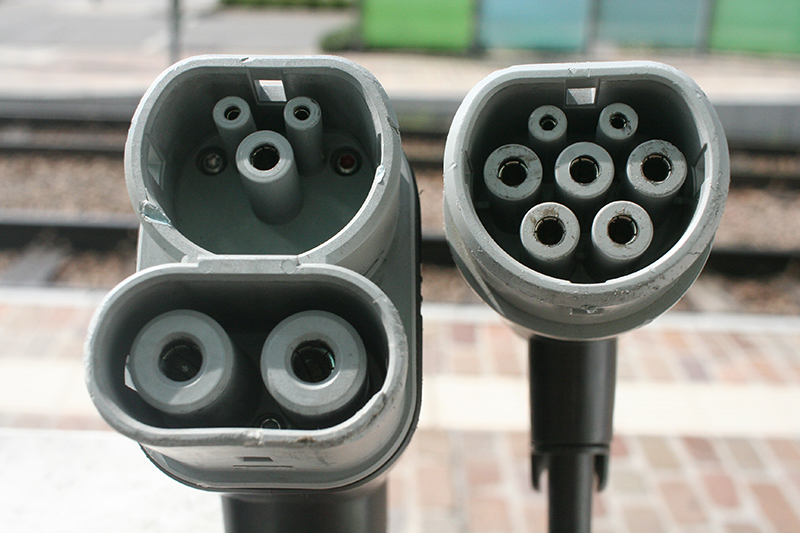There’s a multitude of ways to charge your EV, but for those new EVs driver, how to used the different methods and terminology. We’re looking at one of the most popular ways to charge an electric vehicle when you’re in a rush, just use the CCS plug.
What is CCS?
CCS stands for combined charging system, it’s a means of combining the slower type 1 or type 2 AC charging socket with an additional. Two pins below for much faster DC charging so you only need one socket instead of having two line. Nissan Leaf, which had an AC socket and the DC CHAdeMO socket. SO a lot of EV drivers will have a home charger which will most likely be an AC unit that can deliver about seven kilowatts of power, these are the type 1 and type 2 connectors. However, if you’re doing a longer road trip with 400 miles, you’ll want to plug into a much faster dc charger on route. So you can get back on the road with maybe a 20 or 30 minute stop and this is where the CCS plug comes in.
Let’s take a closer look at the CCS connector for a moment. The popular type 2 medicare’s plug has two smaller pins on top with five slightly larger pins underneath for grounding and to take the AC current, so instead of having a separate plug for DC charging. The CCS plug just drops the pins for AC charging and enlarges the socket to include two bigger DC current pins, so in this combined socket you now have the signal pins from the AC charger used in conjunction with the larger DC pins, hence the name combined charging system.
How the CCS came about it.
Actually, in the first place charging EVs has changed rapidly over the decade and this is unlikely to slow down. The association of german engineers proposed the defined standard for ccs charging in late 2011. The next year a group of seven car makers agreed to implement the standard for DC charging on their cars that group was made up of Audi, BMW, Daimler, Ford, VW, Porsche and GM. There would be more and more other car makers joined the CCS brigade in European countries. At least, where we are some new EV drivers will never have heard the name CHAdeMO.
What is means for us? As EV drivers the prototypes were developed with a view to delivering up to 100 kilowatts of DC charging. But at the time, the vast majority of cars were limited to about 50 kilowatts anyway, so the early charges rolled out supplied in the region of 50 kilowatts of power. But, thankfully the development of the CCS standard didn’t stop there fast forward to 2015 and the advanced technology allowed CCS to develop and show 150 kilowatt charges and now.
In the 2020s, we see the rollout of 350 kilowatt charger, the progress is astonishing it’s rapid and it’s very welcome. So, it’s all well and good throwing out those figures but it’s also important to give a bit of context right. We mentioned that most EVs were limited to DC charging up to 50 kilowatts namely the Nissan Leaf and the Renault Zoe would charge pretty. Quickly, as well on AC power but technology and EVs has developed in tandem with charger we’re now seeing many EVs coming to our showrooms with DC charging capabilities. Many of EV charger between 70 and 130 kilowatts, it’s a kind of the range for EV charging speeds. Hyundai, KONA, VW, ID4, Peugeot, E208, being some popular examples, so even though the tech in the cars has improved they’re still limited to those numbers, even if they plug into a CCS charger capable of delivering more even up to 350 kilowatts, it’s the car that is the limit. But, the gap is closing we’re now in the position of being able to buy a number of cars capable of taking well over 200 kilowatts charge speed.
Thanks to the CCS combo plug, the likes of the Tesla model 3 in Europe gets limited to 200 kilowatts, the Porsche Tycoon and the newly released Hyundai Ioniq 5 and Kia Ev6 will pull around 230 kilowatts and it’s only a matter of time. Before a car can drive into a motorway service station plug into a 350 kilowatt high-powered charger, quite easily add 500 kilometers of range before you even get a coffee and get back to the car. So, who’s using CCS well this is a tricky one to answer as the goal posts are constantly moving. For example, Japanese manufacturers have traditionally been wedded to type 1 plus CHAdeMO charging then there’s the Nissan Leaf in later versions it came with type 2 for AC charging but still stuck with the CHAdeMO plug for DC fast charging. However, the Nissan Aria due out soon has ditched CHAdeMO and will come with the ccs plug at least for European and US buyers. Tesla themselves manufacture their cars with a number of different connectors to suit the countries where they’re sold. So you could say that ccs is primarily a European and North American standard that was driven by European and US manufacturers but the answer really depends on where you’re based.
Post time: Dec-15-2023







